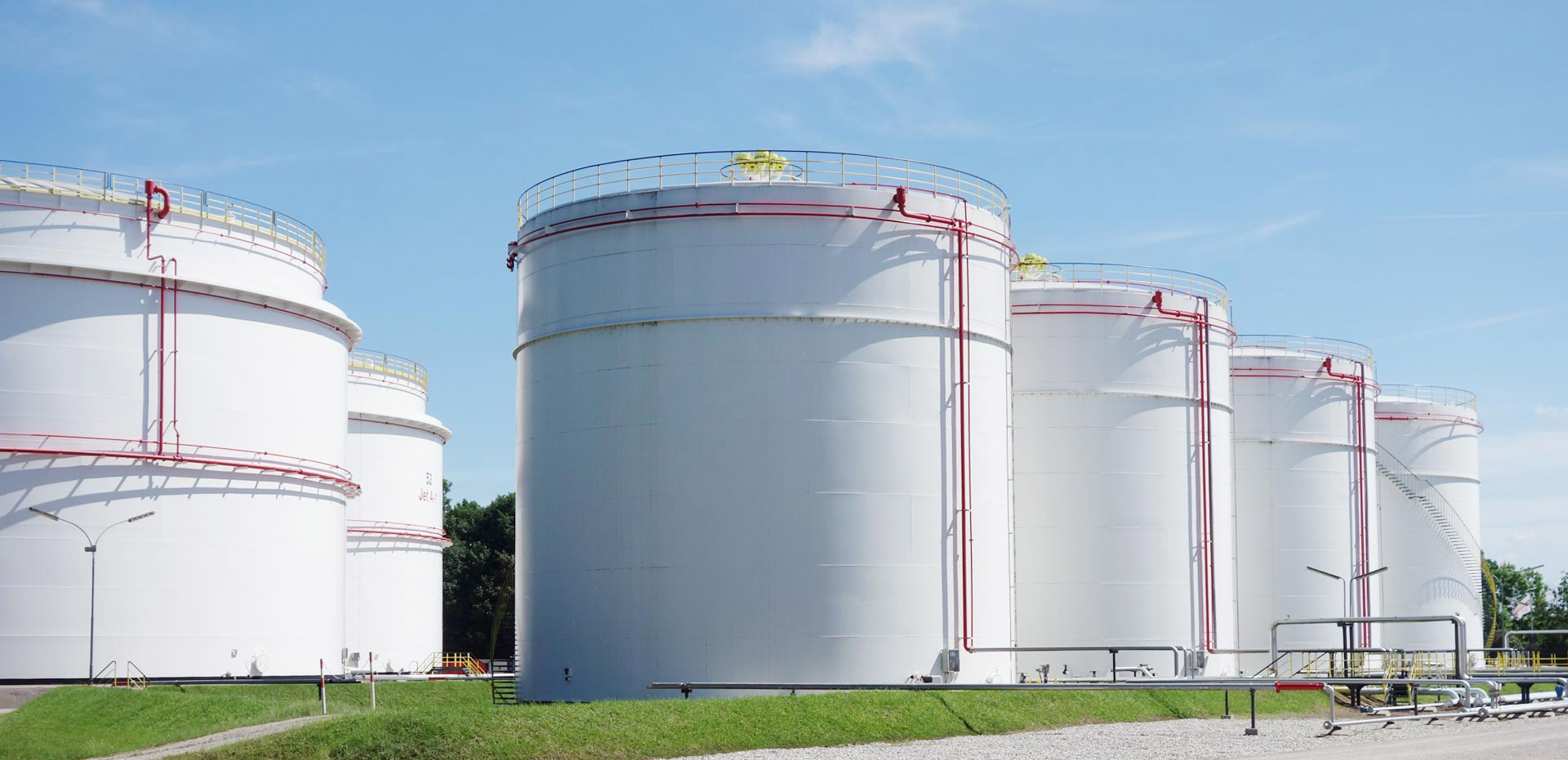Important Terms from A to Z
LNG (Liquefied Natural Gas)
LNG, liquefied natural gas, is natural gas that has been rendered liquid by cooling. Another acronym for this liquefied fossil fuel is GNL, for the French term gaz naturel liquéfié. LNG consists mainly of the hydrocarbon methane, but can also contain a variety of other gases, especially carbon dioxide, nitrogen, ethane, ethene, propane, butane and small amounts of noble gases.
At temperatures of about -160°C, the gas transforms into its liquid state, in which it occupies only about 1/600th of the volume of its gaseous form. To do this, the gas is purified in a complex process in special facilities and then cooled. It can then be transported to its destination as LNG in pipelines or in special tankers with insulated storage tanks. At its port of destination, the liquefied natural gas is usually returned to its gaseous state by heating it in LNG terminals, and then transported via gas pipelines to the grid gas companies.
The main reason the fossil fuel is liquefied is to transport it over routes that are not connected by natural gas pipelines. But as the process is complicated and requires up to 25% of the energy content of the gas, the transportation of liquefied natural gas is only worthwhile over long distances. However, increasing export activities from the United States and Australia could positively affect the trade and transport of LNG in the future.
Standard regulations for fuelling ships with LNG are currently being developed by several institutions and associations. The International Maritime Organization (IMO) has already defined the elements of the Bunker Delivery Note for LNG supplies. Safety and other regulations are being developed by the Society for Gas as Marine Fuel (SGMF) among others. With the adoption of the German Energy and Electricity Tax Act, liquefied natural gas – as well as other marine fuels – became exempt from tax in commercial shipping.
The costs of LNG are made up of the price of natural gas and its liquefaction, plus a premium for transport and fuelling. The total price can be linked to either oil or gas indices. In the oil industry, Brent is mainly used for this. In the gas sector, however, the Title Transfer Facility (TTF) Index or the National Balancing Point (NBP) Index are mainly used. In the U.S., LNG can also be linked to the Henry Hub (HH) Index.
The importance of using LNG as a marine fuel is increasing. LNG tankers in particular also use the LNG they transport for their own engines. Due to efforts to greatly reduce emissions in the shipping industry in the next few years, LNG is also becoming attractive for powering other types of ships. In order to run on LNG, a ship requires insulated storage tanks and a dual-fuel engine that can run on LNG as well as oil-based fuels. Trucks can also use liquid natural gas as fuel when fitted with special tanks and engines.
Status: December 2015
All information subject to change. Errors and omissions excepted.


